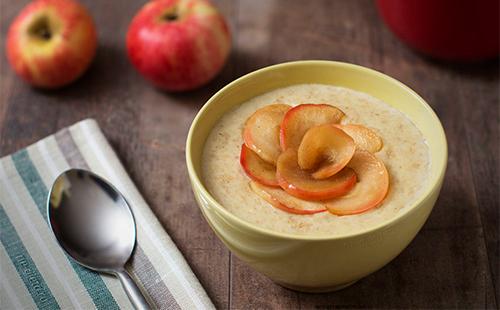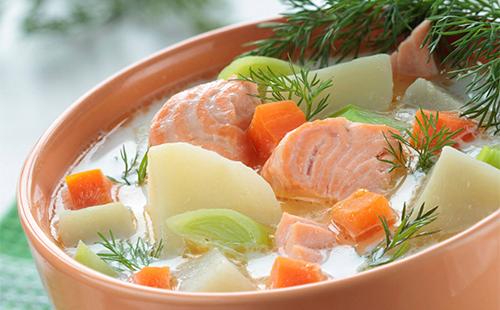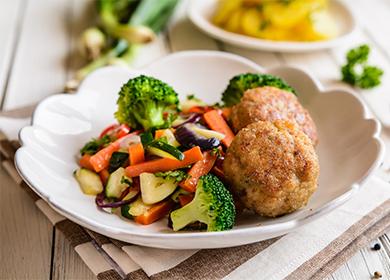The content of the article
Diet alone does not solve the problem of the appearance of purine and oxalate compounds in joints, kidneys, and other tissues. As well as not to remove the acid reaction of the internal environment of the body, which acts as an additional provocateur of metabolic disorders. Diet No. 6 is used as part of complex therapy of problems of salt metabolism, together with the appointment of special medications, making significant adjustments to the patient’s usual way of life.
Indications
The sixth diet is intended "for kings", because, according to the ideas of doctors, it is wealthy people who most often suffer from gout and urolithiasis. This contributes to the use of large amounts of fatty and protein foods, smoked meats, alcoholic beverages. The fact is that almost all of these products during decomposition form extractive nitrogenous compounds, which provoke an increase in the acidity of all body fluids. Also, as a result of the use of "harmful", purine, oxalate compounds and oxalic acid salts are formed - the main provocateurs of nephrourolithiasis and salt deposits in the joint tissue. Diet number 6 is prescribed for:
- gout
- uric acid diathesis;
- uraturia;
- oxaluria;
- cystinuria.
A special nutritional regimen can be used for the chronic course of the disease, with another exacerbation for the speedy achievement of remission, as well as for the prevention of exacerbations or disorders of salt metabolism in general.
Operating principle
Treatment table No. 6 is prescribed to eliminate the exacerbation of a chronic disease. In addition, the reduced intake of substances that provoke pathology into the body makes drug therapy more effective. The shift of the reaction of urine to the alkaline side contributes to the accelerated and facilitated splitting of renal calculi, as well as their painless excretion. With gout, the diet provides significant relief of pain and the possibility of achieving a more stable remission.
Table number 6 allows you to achieve:
- alkalization of the body;
- reducing the amount of harmful salts;
- reduce the likelihood of calculus formation;
- facilitate the removal of existing salt accumulations;
- cleansing the body of substances clogging it.
The doctor can advise such a diet to a person leading an incorrect lifestyle. For example, an obese man who drinks alcohol is a potential patient with gout. If he does not take up his health in a timely manner, then very soon metabolic disorders will force him to do this.
A sparing diet will also help eliminate edema, a tendency to inflammatory skin diseases and impaired immune responses, since they are also provoked by the predominance of an acid reaction in the body.
BZHU, calorie content and basic rules
Diet number 6 involves a slightly reduced calorie intake. This is achieved by reducing the intake of protein and refractory fats. The recommended daily ratio of proteins, fats and carbohydrates (BJU) is as follows:
- vegetable proteins - 30-45 g;
- animal proteins (mainly dairy) - 30-45 g;
- vegetable fats - 30 g;
- animal fats - 60 g;
- carbohydrates- up to 400 g.
The amount of carbohydrates corresponds to 80 g of sugar per day. The diet requires a reduced consumption of table salt (about 7 g), as well as an increased amount of clean drinking water - about 2.5 liters. An important condition for following this recommendation is the absence of heart disease or decreased renal function. Water should be consumed completely pure or slightly alkaline. The total daily caloric intake should not exceed 2600 kcal.
It is important to adhere to the principles of fractional nutrition: eat a little bit up to six times a day.
Products that contain an increased amount of purine and oxalate substances, acidicity provocateurs, and oxalic acid salts should be completely eliminated. Another way to reduce salt intake is to reduce the amount of protein products consumed to 150 g per serving no more than three times a week.
The preferred cooking method is boiling, which allows you to get rid of half of the harmful compounds in meat and fish. After cooking, the products can be processed in any other way, but subject to the use of a reduced amount of fat.
For general alkalization of the body, it is recommended to give preference:
- reduced fat milk;
- fresh vegetables;
- Fresh fruit
- cereals (in moderation).

Featured Products
Since vegetables, fruits and dairy products are taken as the basis of the diet, they should be consumed daily. Other types of food are a way to “dilute” a lightweight diet. When compiling the menu, refer to the following table.
Table - Products and dishes allowed on diet No. 6
| Category | Allowed | Cooking features | Frequency of use |
|---|---|---|---|
| First meal | Vegetable soups | Do not use meat, fish, mushroom broths | Once a day (for lunch) |
| Meat fish | - Chicken, turkey, veal, rabbit; - low-fat varieties of river and sea fish | Use pre-cooked until soft meat and until cooked fish | Not more than 3 times a week |
| Milk, eggs | - Eggs (1 per day); - any non-fat dairy and sour milk products | - Eggs are cooked in any way; - make soups, sauces, desserts, drinks from milk | Daily |
| Second courses | - Cereals (moderately); - any bread and bakery products (moderately) | Porridge is cooked in water and milk. | Once a day |
| Vegetables | All non-banned | - Use in raw form; - prepare casseroles, steam dishes, meatballs | Daily |
| Fruits | Everything, especially citrus | - Use fresh; - prepare jelly, fruit drinks and compotes | Daily |
| Dessert | - Marshmallows; - pastille; - jam; - jam; - marmalades; - milk desserts | Jelly | Moderately |
Prohibited Products
The main prohibition is meat and fish broths, soups, aspic, jellies and other “blows” with animal proteins. It is also impossible:
- smoked meats;
- canned food;
- pickles;
- marinades;
- legumes;
- mushrooms;
- sorrel;
- radish;
- radish.

Menu example
Doctors recommend a glass of water before each meal as part of the sixth treatment table. It is better to do this 15-20 minutes before the meal. Repeat the procedure after 40 minutes after eating. Thus, the necessary minimum water is provided in the absence of a risk of digestive disorders. Menus can be planned based on the following examples.
- Breakfast. Oatmeal or rice porridge in milk.Boiled or fried egg, omelet with milk. You can also cottage cheese with fat-free sour cream. As a drink - light herbal tea.
- Dinner. Soup cooked from potatoes, carrots, peppers, cauliflower. A salad of any fresh vegetables. Vegetable side dish: sauté, stuffed cabbage without meat, beetroot patties.
- Dinner. Cheesecakes or mashed potatoes with salad. Omelette, a portion of cottage cheese, cottage cheese casserole are also suitable.
The diet provided by table No. 6 is considered insufficiently nutritious for an adult, therefore it can be observed for a limited amount of time, on the recommendation of a doctor. The specialist must establish the frequency and timing of the use of the diet.

